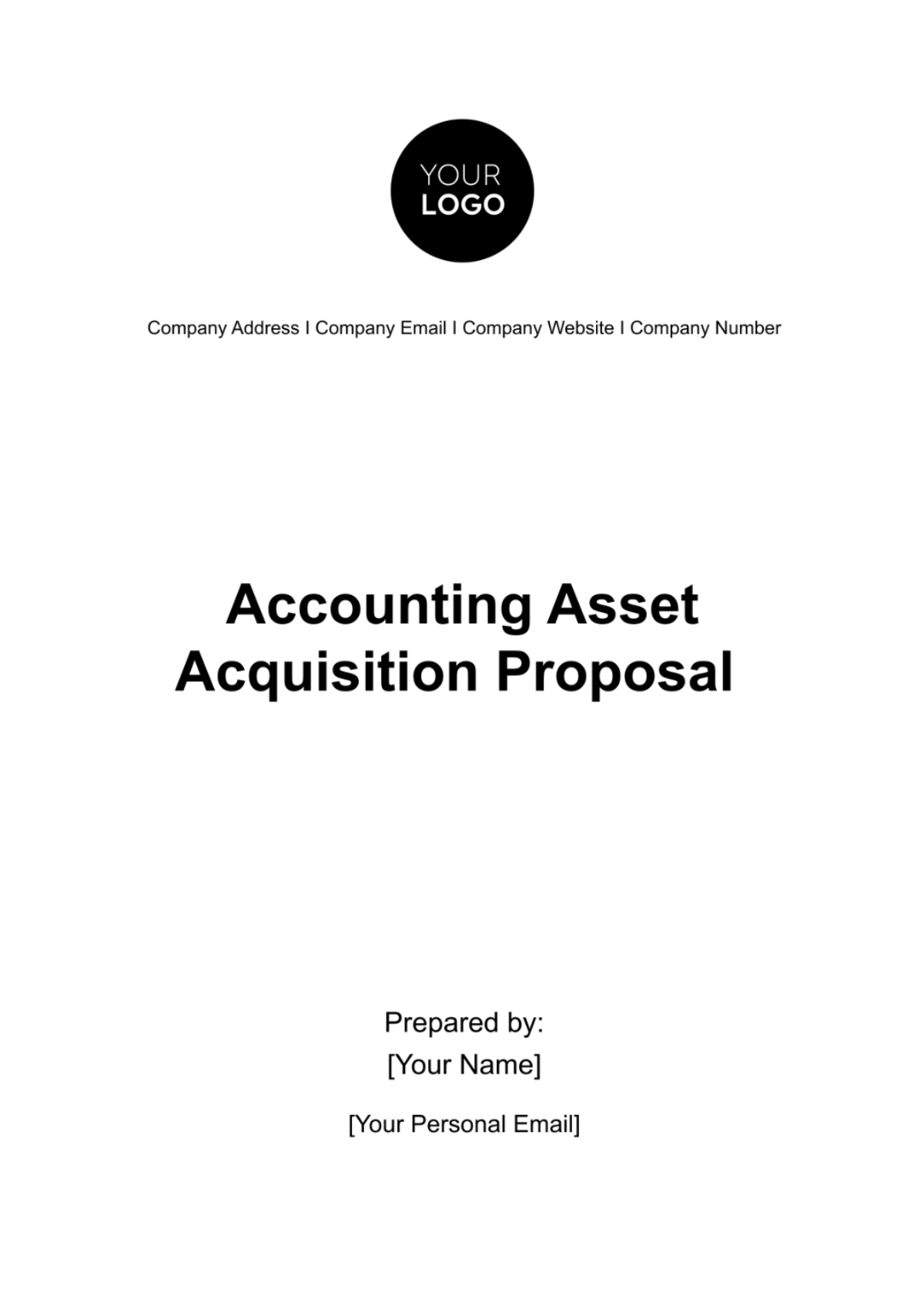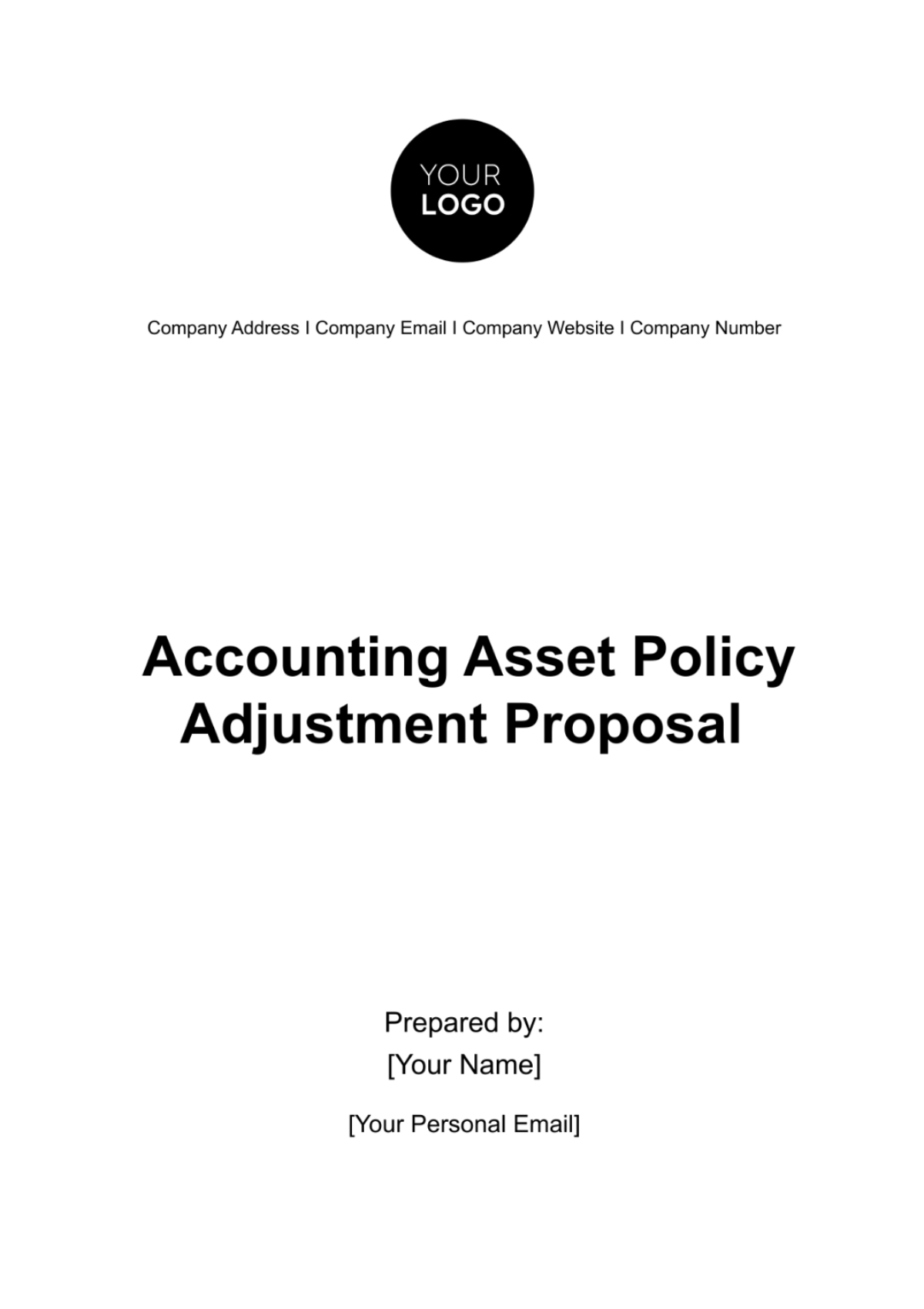Payroll Accounting Strategy Proposal
I. Introduction
This proposal is dedicated to the implementation of a robust payroll accounting system tailored for [Your Company Name]. The primary objective is to usher in an era marked by efficient resource allocation, optimal time management, and heightened financial transparency. By establishing a well-designed payroll accounting strategy, the company aims to leverage accurate and timely financial reports as the cornerstone for informed decision-making. The proposal delves into intricate details regarding the requisite processes, systems, and resources essential for effective payroll account management. Simultaneously, it introduces innovative avenues for productivity enhancement and cost reduction, ultimately leading to a substantial increase in profitability.
The envisioned payroll accounting strategy serves as the catalyst for eliminating losses associated with payroll inaccuracies and inconsistencies. With a comprehensive framework that seamlessly integrates all vital aspects of payroll accounting, this proposal strives to lay a solid foundation for organizational growth and sustained success. The narrative unfolds to reveal the interconnected elements crucial for fostering a financial ecosystem characterized by precision, efficiency, and strategic prowess.
II. Objectives
The objectives of the proposal are:
Streamline payroll processing workflow
This pertains to creating hassle-free payroll procedures, reducing the workload of the HR department and negating the potential for human error. This would improve efficiencies across the company, increase accuracy, and ultimately result in cost savings.
Automate payroll accounting functions
Automation would replace manual input and reduce the chance of errors often associated with human intervention. This will, in turn, significantly improve productivity levels and operational efficacy, facilitating quicker rectifications, smoother audits, and more accurate data overall.
Enhance financial transparency and accountability
In essence, this proposal seeks to create a system where every transaction, every financial occurrence is tracked, recorded, and easily accessed for review. Not only does this encourage honest and responsible financial management, but it also fosters a culture of trust between the business, stakeholders, and employees.
III. Methodology
A. Workflow Analysis
Assessment of Existing Workflows
In this critical phase, we embark on a thorough examination of your current payroll processes. Our approach involves identifying and dissecting the key steps inherent in your payroll workflows. Through this meticulous assessment, we aim to unravel the intricacies of your existing system.
Identification of Bottlenecks and Inefficiencies
Delving deeper, our analysis extends to pinpointing potential bottlenecks and inefficiencies within your current workflow. We scrutinize each step to identify areas where slowdowns or obstacles may impede the seamless progression of your payroll processes. By highlighting these bottlenecks, our objective is to pave the way for smoother, more efficient operations.
Recommendations for Process Enhancements
Building upon our findings, we present a set of comprehensive recommendations for enhancing your existing processes. Our proposals are crafted to streamline workflow steps, eliminating redundancies and optimizing the overall efficiency of your payroll processes. Furthermore, we delve into opportunities for automation, strategically identifying areas where technology can be harnessed to drive increased efficiency and productivity.
B. Technology Implementation
Selection and Customization of Advanced Payroll Software
Following the insights gained from the Workflow Analysis, we move on to the selection and customization of advanced payroll software. This involves a meticulous process of identifying software solutions that align seamlessly with your company's specific requirements. Customization is key, ensuring that the chosen software caters to the unique nuances of your organizational structure.
Integration with Existing Systems
Our approach includes a thorough integration strategy to seamlessly incorporate the new payroll software into your existing systems. This phase involves careful planning to ensure minimal disruptions and a smooth transition. Our goal is to enhance overall operational cohesion by integrating the new technology seamlessly.
Employee Training and Onboarding
Recognizing the importance of user adoption, we prioritize employee training and onboarding for the newly implemented technology. This involves comprehensive training sessions to equip your team with the necessary skills to effectively utilize the new payroll software, fostering a smooth transition and minimizing any potential resistance to change.
C. Compliance Check
Auditing the Implemented Technology for Legal Adherence
As a critical step, we conduct a thorough audit of the implemented technology to ensure strict adherence to legal requirements. This includes compliance with financial regulations, data protection laws, and any other pertinent legal considerations. Our commitment is to safeguard your company from potential legal complications.
Verification of Compliance with Financial Regulations
Our Compliance Check extends to verifying that the adopted payroll system aligns with applicable financial regulations. This includes tax codes, reporting standards, and any other financial compliance requirements specific to your industry and location. Our meticulous verification process is designed to provide you with confidence in the legal soundness of your payroll processes.
Data Privacy Assessment
Recognizing the paramount importance of data privacy, we conduct a comprehensive assessment to ensure that your payroll processes align with the latest data protection regulations. This includes securing sensitive employee information and implementing measures to safeguard against potential breaches, thereby enhancing overall data privacy and security.
IV. Timeline
The table below presents the proposed timeline for the payroll accounting strategy overhaul:
Stages | Expected Completion |
|---|---|
Workflow Analysis | Month 1 - Month 2 |
The first phase of the project is the Workflow Analysis, is slated to be finished within the preliminary two months. It is designed to conduct a comprehensive examination of the existing payroll accounting system to identify potential deficiencies and weak links that might be present. This crucial operation forms the foundational tone of the entire project, as it uncovers areas that may be benefiting from optimization or complete systemic overhauls. The analysis also assists in determining the areas that necessitate fundamental changes, providing a clear indication of the project's direction.
This stage of the project is significant as it forms the foundation for all the subsequent strategies and implementations. Periodic evaluations and workflow analysis are essential elements for a successful overhaul of an organization's payroll system. Without strong analytics backing the changes, it would be challenging to bring about meaningful and long-lasting improvements in the payroll system. Furthermore, the Workflow Analysis sheds light on the magnitude of technological enhancement required, giving insights into the extent of investment and resources that would be necessary for the transformation.
IV. Budget
The table below illustrates the tentative project budget:
Description | Estimated Cost |
|---|---|
Workflow Analysis | [$5,000] |
Total |
The table above shows a simplified breakdown of the project budget with one specific line item identified - Workflow Analysis which is projected to cost $5,000. This cost is inclusive of time and resources required to comprehensively analyze the current workflow process, identify bottlenecks, and devise possible solutions aimed at streamlining operations and increasing efficiency. The analysis also includes the testing and implementation of new and improved methods, thereby contributing significantly to the overall project's success. Fundamentally, budgeting for the workflow analysis ensures a systematic approach to improving efficiency, ultimately saving time, reducing costs, and increasing profitability in the long run.
In general, budgeting serves as a critical tool for project management, facilitating accurate foresight and providing guidance throughout project implementation. It ensures that every aspect of the project, such as the one explained earlier, is adequately financed to maximize productivity and effectiveness. More so, having a detailed project budget,, helps stakeholders to understand how resources will be allocated and controls cost overruns that might impede project completion.
V. Benefits and Risks
A. Benefits
Enhanced Efficiency in Payroll Processing
The proposed payroll accounting strategy introduces streamlined processes, significantly reducing processing times. Automation replaces manual input, minimizing the potential for errors and ensuring faster and more accurate payroll processing.
Improved Financial Transparency and Accountability
The system captures and records every financial transaction and payroll change, creating a comprehensive audit trail. This enhances financial transparency, facilitating easier audits, and fostering a culture of accountability within the organization.
Streamlined Payroll Accounting Functions
The strategy simplifies and optimizes complex payroll management functions. By leveraging technology and automation, the payroll accounting system becomes more user-friendly, saving time and reducing administrative costs associated with manual processes.
B. Risks and Mitigation
Resistance to Change
Employee resistance to new systems is a common challenge. To mitigate this, the strategy includes a robust change management plan involving effective communication, highlighting the benefits of the new system, and providing comprehensive training sessions to ensure a smooth transition.
Integration Challenges
The integration of the new payroll system with existing systems may pose challenges. A meticulous integration plan, regular testing, and involvement of IT experts in the process mitigate these challenges, ensuring a seamless transition.
Legal Compliance Issues
Staying compliant with evolving legal and regulatory requirements is crucial. The proposal includes regular legal reviews, staying informed about regulatory updates, and maintaining flexibility in the system to adapt to changing compliance standards.
VI. Executive Leadership
Effective executive leadership involvement is pivotal for the success of the proposed payroll accounting strategy. Key responsibilities of executives include:
A. Strategic Alignment
Executive leaders play a crucial role in ensuring that the proposed strategy aligns with the overall organizational goals and objectives. Their involvement includes:
Alignment with Organizational Goals
Ensuring that the payroll accounting strategy is in sync with the broader strategic objectives of the organization.
Visionary Direction
Providing a clear vision and direction for the successful implementation of the strategy, emphasizing its importance in achieving organizational success.
Resource Allocation
Allocating the necessary budget, technology, and human resources to support the implementation of the payroll accounting strategy.
B. Resource Allocation
Executive leaders are responsible for allocating the required resources for the successful implementation of the proposed payroll accounting strategy. This involves:
Budget Allocation
Determining and allocating the financial resources necessary for the entire project, ensuring that it is adequately funded.
Technology Provision
Ensuring that the organization provides the necessary technology infrastructure required for the new payroll system.
Human Resource Deployment
Allocating skilled personnel and ensuring that the right talent is involved in the various phases of the strategy implementation.
C. Strategic Oversight
Executive leaders provide strategic oversight to ensure the success of the payroll accounting strategy. This involves
Monitoring Progress
Regularly monitoring the progress of the strategy implementation, making adjustments as needed to stay on course.
Risk Management
Identifying and mitigating potential risks associated with the strategy, ensuring a smooth and risk-averse implementation.
Communication
Effectively communicating the importance of the strategy to all stakeholders, fostering a shared understanding of its significance.
D. Overall Leadership Collaboration
The collaborative efforts of executive leaders are instrumental in steering the organization toward successful payroll accounting strategy implementation. By aligning strategic goals, allocating resources effectively, and providing strategic oversight, executive leadership sets the tone for a successful and transformative organizational change. Open lines of communication, regular updates, and a shared commitment to the strategy's objectives are fundamental to the collective success of the proposed payroll accounting overhaul under executive leadership.
VII. Stakeholder Engagement
In the context of implementing a robust payroll accounting strategy, effective stakeholder engagement is paramount for garnering support, addressing concerns, and ensuring a seamless transition. The key aspects of stakeholder engagement are:
A. Identification of Stakeholders
Employee Involvement
Engaging employees at all levels, from entry-level staff to managerial positions, is crucial. Their perspectives, concerns, and expectations should be considered to create a strategy that resonates with the entire workforce.
HR Department
The HR department plays a pivotal role in the payroll process. Engaging with HR professionals ensures that the strategy aligns with HR objectives and streamlines their responsibilities.
Leadership Teams
Involving leadership teams, including department heads and executives, is essential for securing top-level support and alignment with broader organizational goals.
B. Communication Strategies
Transparent Communication
Establishing transparent communication channels is vital. Regular updates, town hall meetings, and informative materials contribute to a shared understanding of the strategy's objectives and benefits.
Feedback Mechanisms
Creating mechanisms for feedback and suggestions allows stakeholders to express their concerns, provide insights, and feel actively involved in the decision-making process.
Training Programs
Designing comprehensive training programs for employees ensures that they are well-equipped to adapt to new payroll processes. These programs should cover software usage, policy changes, and any other relevant aspects.
C. Addressing Concerns
Open Forums
Hosting open forums or Q&A sessions provides a platform for stakeholders to voice concerns and seek clarification. This fosters a sense of openness and builds trust in the change process.
Dedicated Support Channels
Establishing dedicated support channels, such as help desks or helplines, ensures that stakeholders have access to assistance when navigating changes or encountering challenges.
Customized Communication
Tailoring communication to address specific concerns of different stakeholder groups ensures that each segment feels heard and considered in the overall strategy.
D. Change Management
Change Champions
Identifying and appointing change champions within different departments can facilitate the smooth integration of the new payroll strategy. These individuals can serve as advocates, guiding their peers through the transition.
Clear Change Roadmap
Providing a clear roadmap for the changes, including milestones and timelines, helps stakeholders understand the journey ahead and reduces uncertainty.
Celebrating Successes
Recognizing and celebrating milestones and successes during the implementation process boosts morale and reinforces positive engagement among stakeholders.
VIII. Project Monitoring and Evaluation
Effective project monitoring and evaluation are indispensable components of ensuring the success and efficiency of the payroll accounting strategy implementation. Let us delve into the key considerations and methodologies for robust monitoring and evaluation:
A. Key Performance Indicators (KPIs)
Accuracy Rate in Payroll Processing
One crucial KPI is the accuracy rate in payroll processing. This metric measures the precision of the system in calculating and disbursing payments, reducing errors, and minimizing financial discrepancies.
Efficiency in Processing Time
The time taken for payroll processing is another vital KPI. It assesses the efficiency gains achieved through automation, aiming for a streamlined and expedited payroll processing timeline.
Employee Satisfaction Surveys
Regular surveys to gauge employee satisfaction provide valuable insights into the impact of the new payroll system on the workforce. This KPI reflects the system's user-friendliness and its ability to meet employee expectations.
B. Periodic Audits and Compliance Checks
Financial Audits
Conducting periodic financial audits ensures that the payroll accounting system adheres to financial regulations, tax codes, and reporting standards. This helps in identifying and rectifying any non-compliance issues promptly.
Data Privacy Audits
Given the increasing importance of data privacy, regular audits of the system's data protection measures and practices are essential. This ensures that employee information is secure and handled in compliance with privacy regulations.
Adaptability to Regulatory Changes
The system's ability to adapt to evolving regulatory changes is a critical aspect. Regular checks ensure that the payroll strategy remains in compliance with any new legal requirements.
C. Feedback Mechanisms
Employee Feedback Surveys
Implementing regular employee feedback surveys provides a continuous feedback loop. This not only helps in addressing concerns but also identifies areas for improvement in the payroll system.
Stakeholder Review Meetings
Periodic review meetings with key stakeholders, including HR representatives and department heads, offer a platform for discussing the effectiveness of the strategy and addressing any emerging issues.
Post-Implementation Reviews
Conducting post-implementation reviews at predefined intervals allows for a comprehensive evaluation of the strategy's impact, enabling adjustments based on lessons learned and changing organizational needs.
D. Continuous Improvement Initiatives
Identification of Bottlenecks
Continuously identifying and addressing bottlenecks in the payroll system ensures ongoing process optimization and enhanced efficiency.
Technology Updates and Upgrades
Keeping abreast of technological advancements and updating or upgrading the payroll software as needed ensures that the organization benefits from the latest features and security measures.
Training and Skill Development
Providing ongoing training and skill development opportunities for employees ensures that they stay adept at using the payroll system and are equipped to handle any new functionalities.













